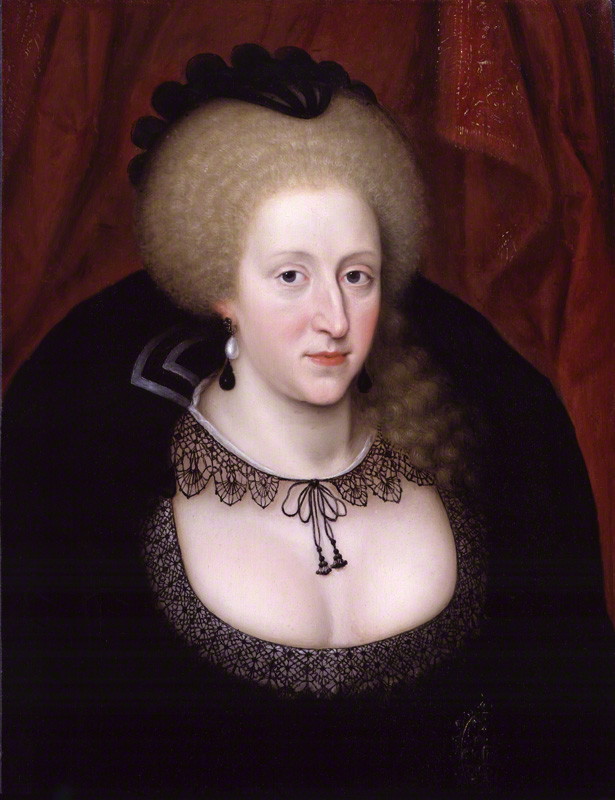Case Study 4: Anne of Denmark attributed to Marcus Gheeraerts the Younger c.1612
This example illustrates how authenticated portraits can be used to confirm the identity of a sitter. It also illustrates how costume and biography can be used to attribute a date of execution. However, the attribution to William Larkin was less certain. More recently the portrait was exhibited as by ‘Unknown artist’. The catalogue entry notes that the attribution to Larkin ‘was discounted when a thorough technical examination was undertaken and works more securely attributed to the artist. It has since been attributed to Marcus Gheeraerts the Younger (1561/2-1636) the leading portrait painter of his day, who was patronized by Anne at about this time. However, the smooth and polished way in which the flesh, in particular, is depicted, is not very close to Gheeraerts’s style at this time, and it seems more likely that the portrait is by an accomplished painter yet to be identified.’ (T. Cooper, Searching for Shakespeare, NPG exhibition catalogue, 2006, pp.168-9, no.76, entry by Catherine Macleod).
“Anne of Denmark (NPG, 4656). A name-plate identified [the portrait] as Elizabeth I, which the auctioneers who sold it were acute enough to discount, but no alternative identification was suggested. The picture was recognized by the Director of the Gallery, and subsequent comparison with authentic portraits of Anne confirmed the identification. A work of great quality, now attributed to William Larkin, its freshness and vitality suggest that it must have been painted from life. The sitter is shown in black, probably in mourning for her son, Henry Prince of Wales, who died in 1612.”
RL Ormond, ‘The National Portrait Gallery archive’, Journal of the Society of Archivists, 4 (1970), 130-136)

